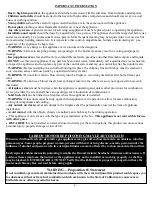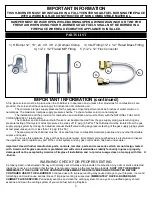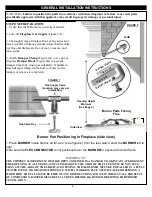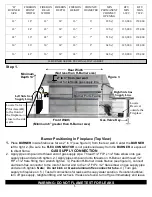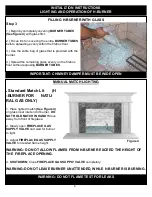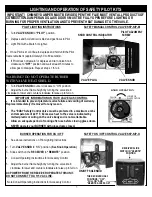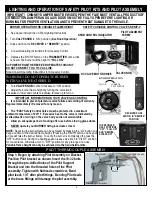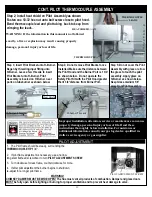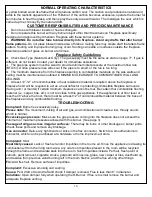
NORMAL OPERATING CHARACTERISTICS
A yellow bodied wood like flame that will produce carbon soot. The carbon soot produced is natural and
adds to the realistic appearance of the H-Burner. If the carbon becomes excessive, operate the burner for
ten minutes to heat the glass, and then spray the sooty area with water. The dislodges the soot, which is
carried up the chimney by the natural draft.
CUSTOMER RESPONSIBILITIES AND PERIODIC MAINTENANCE
Do not use with blower inserts or heat exchangers.
Do not operate this burner with any burner object other than the American Fireglass specifically
designed and approved by American Fireglass with these burner systems.
WARNING: Do not allow fans to blow directly into fireplace. Avoid any drafts that alter burner
flame patterns.
Do not place blower inside area of firebox. Ceiling fans may create draft that alters flame
patters. Sooting and improper burning may occur. Sooting can settle on surfaces outside the fireplace.
Maintain position of glass on burner at all times.
Fireplace Safety Guidelines
A. Check Gas Type (Natural Gas Only). The gas supply must be the same as state on page ??. If gas is
different, do not install. Contact your dealer for immediate assistance.
A.
The gas pipe system must be sized to provide minimum inlet pressure at the maximum flow rate
(BTU/hr). Undue pressure loss will occur if the pipe is to small, or the run is too long.
B.
The minimum clearance from the fireplace opening to combustible materials on the side walls and
ceiling must be maintained as outlined in MINIMUM CLEARANCE TO COMBUSTIBLES WALL AND
CEILINGS.
C.
At least 10”-12” of noncombustible or heat resistance material is required above the fireplace. A
fireplace hood will be required to act as a heat deflector in protecting combustible fireplace surrounds
(facing and / or mantel) if certain minimum clearance cannot be met. Be certain that combustible flooring
material (i.e.: carpet, title, etc.) is not too close to this gas appliance. If the appliance is at floor level or
less than 6” above the floor, there must be at least 12” of noncombustible material between the base of
the fireplace and any combustible flooring.
TROUBLESHOOTING
Complaint:
Burner is excessively noisy.
Please note:
The movement, mixing of air and gas, and combustion will create a low, throaty sound,
which is normal.
Excessive gas pressure:
Make sure the gas pressure coming into the fireplace does not exceed the
minimum or maximum pressures allowed with this burner. (See page 3)
Passage of air/gas across irregular surfaces:
There may be burrs or other blockage on burner ports.
Check these ports and remove any blockage.
Gas connector:
Relive any tight bends or kinks in the flex connector. Switch to a smooth aluminum
connector, which can be purchased at a hardware or home improvement store.
Complaint:
Odor
Most likely causes:
Lack or fresh air and/or impurities in the rooms air. Since the appliance is drawing its
combustion air from the living room area, any odors or impurities present in the room will be recycled
through the flame and recirculate back into the room. Such impurities include: Pet hair, fresh paint or
varnish, paint remover, cigarette smoke, potpourri and incense, glues, new carpet or tiles, dust build up,
and residue from previous wood burning left in the room firebox, and the flue among other things.
Fix:
Add fresh air. Remove surface of impurities.
Complaint:
Excessive smoking and sooting.
Cause:
Poor draft or down draft and check if damper is closed. Flue is less than 8” in diameter.
Solutions:
Open damper fully when operating the H-Burner. If flue is to small remove the burner and
adequate fireplace venting.
10.


